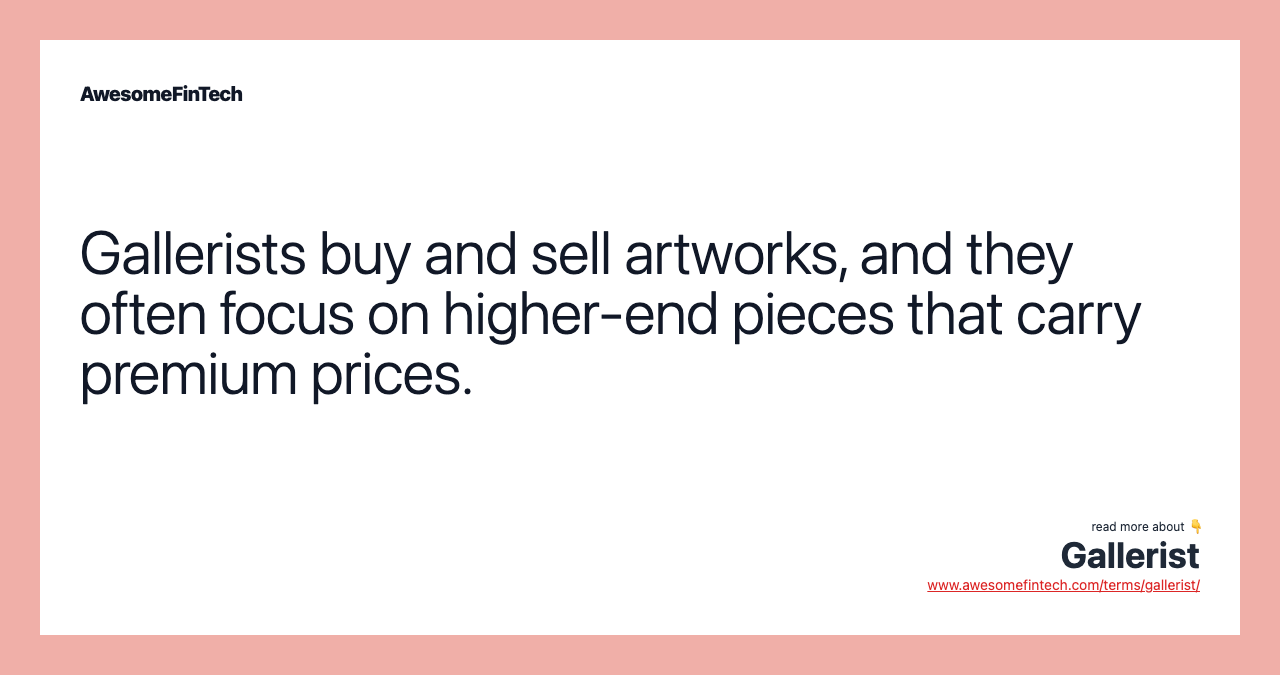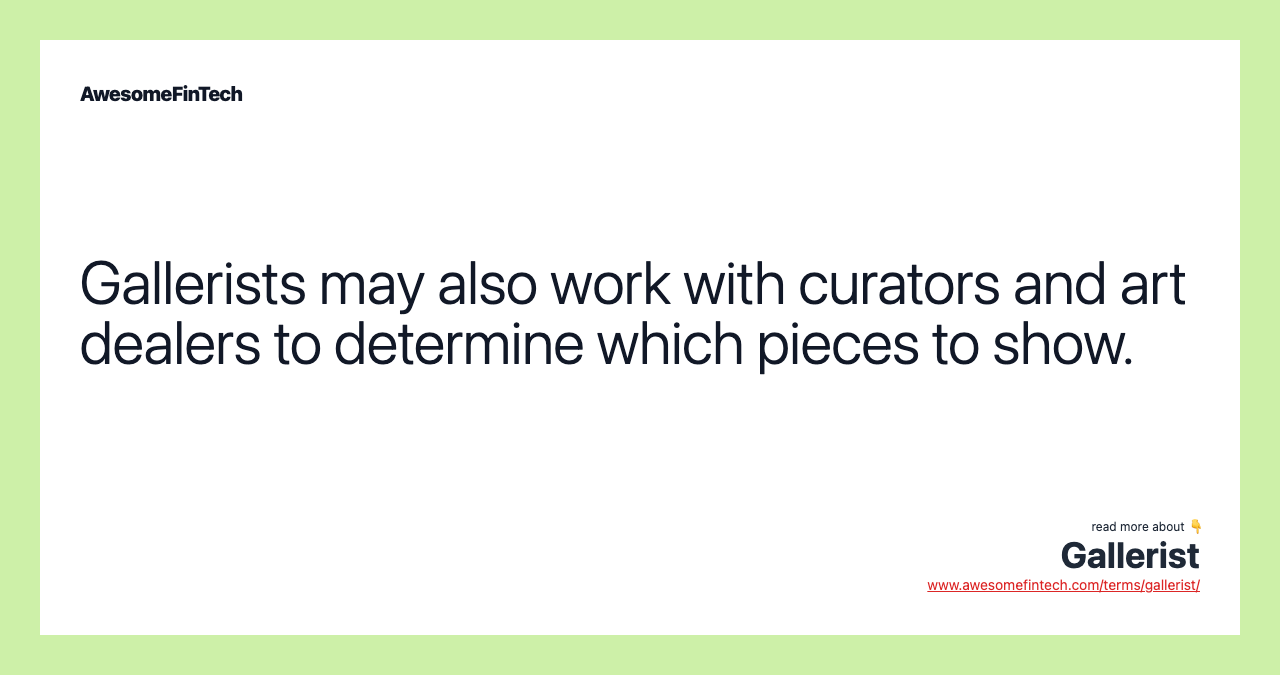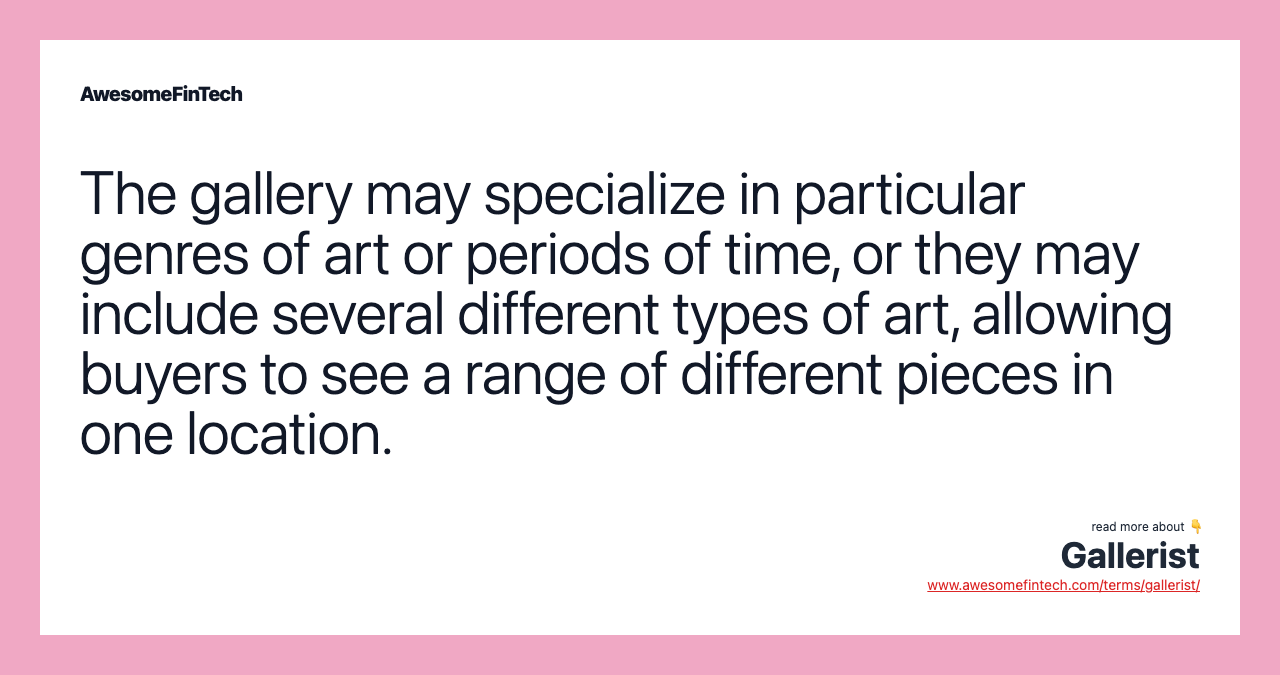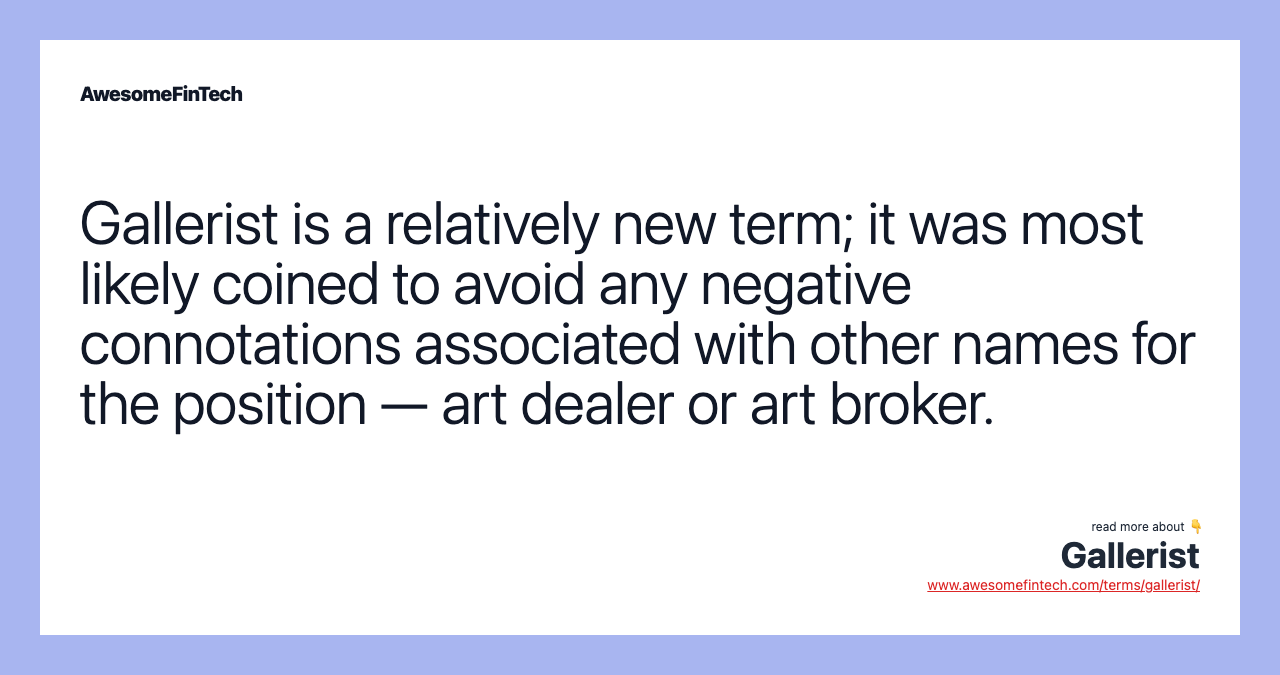Gallerist
A gallerist is an owner or operator of an art gallery. The gallery may specialize in particular genres of art or periods of time, or they may include several different types of art, allowing buyers to see a range of different pieces in one location. The gallery may specialize in particular genres of art or periods of time, or they may include several different types of art, allowing buyers to see a range of different pieces in one location. Gallerist is a relatively new term; it was most likely coined to avoid any negative connotations associated with other names for the position — art dealer or art broker. It was most likely coined to avoid any negative connotations associated with other names for the position — art dealer, or art broker.

What Is a Gallerist?
A gallerist is an owner or operator of an art gallery. Gallerists buy and sell artworks, and often focus on higher-end pieces that carry premium prices. The job responsibilities range from the technical — such as how to display artworks — to operational, such as keeping the gallery running properly.





Understanding the Duties of a Gallerist
Gallerists are responsible for the artworks shown in the gallery. Gallerists may also work with curators and art dealers to determine which pieces to show. The gallery may specialize in particular genres of art or periods of time, or they may include several different types of art, allowing buyers to see a range of different pieces in one location.
Buyers and sellers expect someone with expertise to be assisting them when evaluating a particular work of art, so gallerists need to be well-versed in the art they are selling. This knowledge may come from a formal education in art history, or the gallerist may have been a museum curator or worked in auction houses in the past. A gallerist should know how to price their inventory so it will sell, but not be undervalued.
Keeping up with the current art trends and markets is very important when it comes to valuing art. Some gallerists are able to determine whether a particular piece is authentic or a forgery, and can identify the artist of an unsigned piece based on the techniques used to create it.
To be a successful gallery owner, one must also be able to run a business, including keeping accurate financial records, paying taxes, managing employees, and tracking inventory. Those without business savvy may be more fit to work for another gallerist, where they can use their art knowledge without worrying about the business side of things.
Special Considerations
"Gallerist" is a relatively new term. It was most likely coined to avoid any negative connotations associated with other names for the position — art dealer, or art broker. The term "art dealer" could be seen by some in a negative light since the word dealer may suggest a high turnover of merchandise and a lack of a connection to the art pieces.
A gallerist, on the other hand, is more likely to be seen as someone who supports or represents artists who create the works shown in the gallery, rather than someone whose main goal is to sell art. The term itself may have derived from the French word, "galeriste," which is often used by top gallery owners to distinguish themselves from other dealers, or the German words for a male or female gallery owner, "galerist" or "galeristin."
Related terms:
Dealer
A dealer is a person or firm who buys and sells securities for their own account, whether through a broker or otherwise. read more
Electronic Commerce (Ecommerce)
Ecommerce is a business model that enables the buying and selling of goods and services over the Internet. Read about ecommerce benefits and trends. read more
Networking
Networking is the exchange of information and ideas among people with a common profession or other interest, usually in an informal social setting. read more
Stockbroker
A stockbroker is an agent or firm that charges a fee or commission for executing buy and sell orders for an investor. read more
Trust Receipt
A trust receipt is a notice of the release of merchandise to a buyer from a bank, with the bank retaining the ownership title of the released assets. read more
Workable Indication
Workable indication is a pricing technique, stated as a range, which allows the dealer flexibility when offering to buy or sell a municipal bond. read more